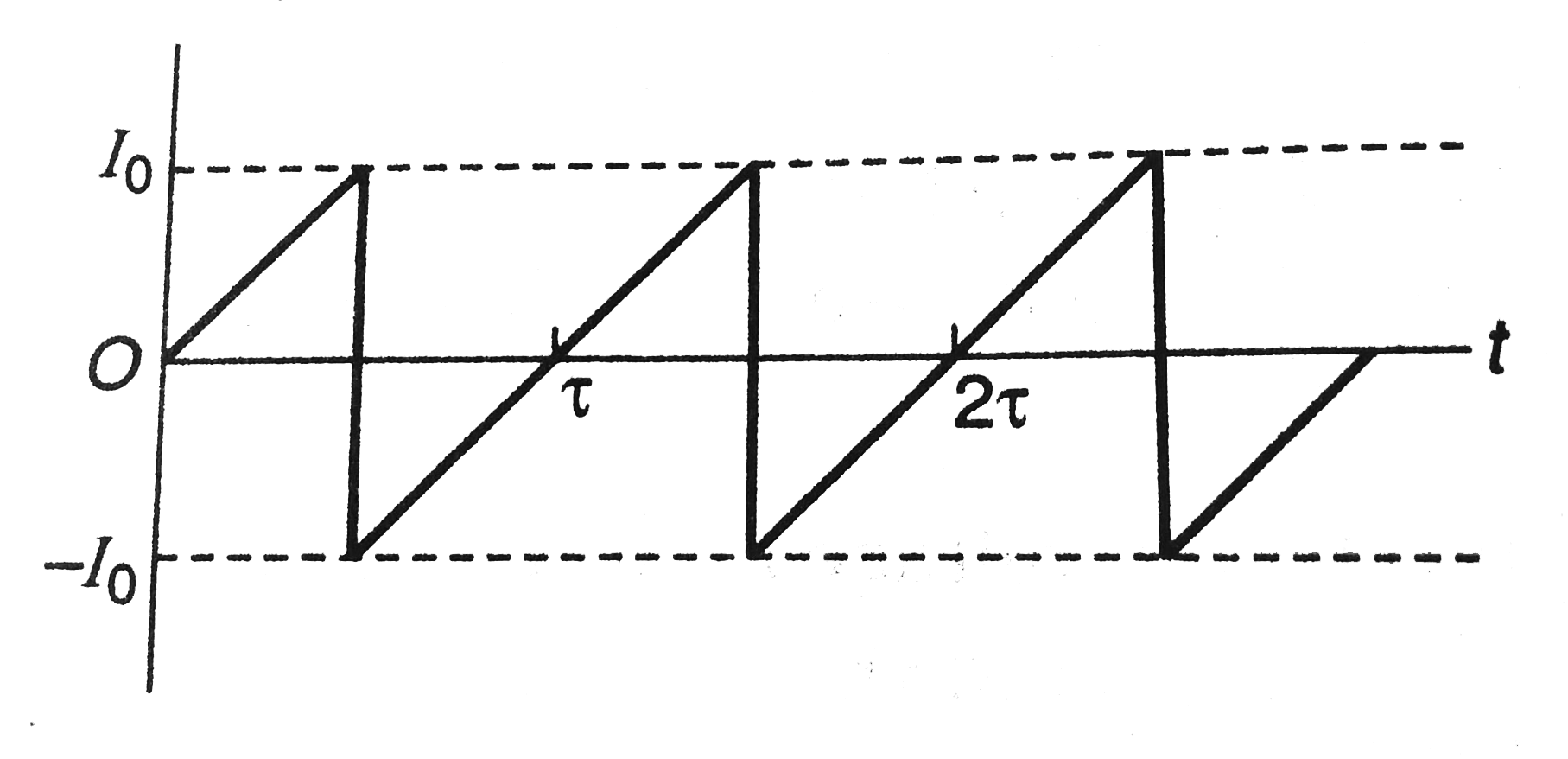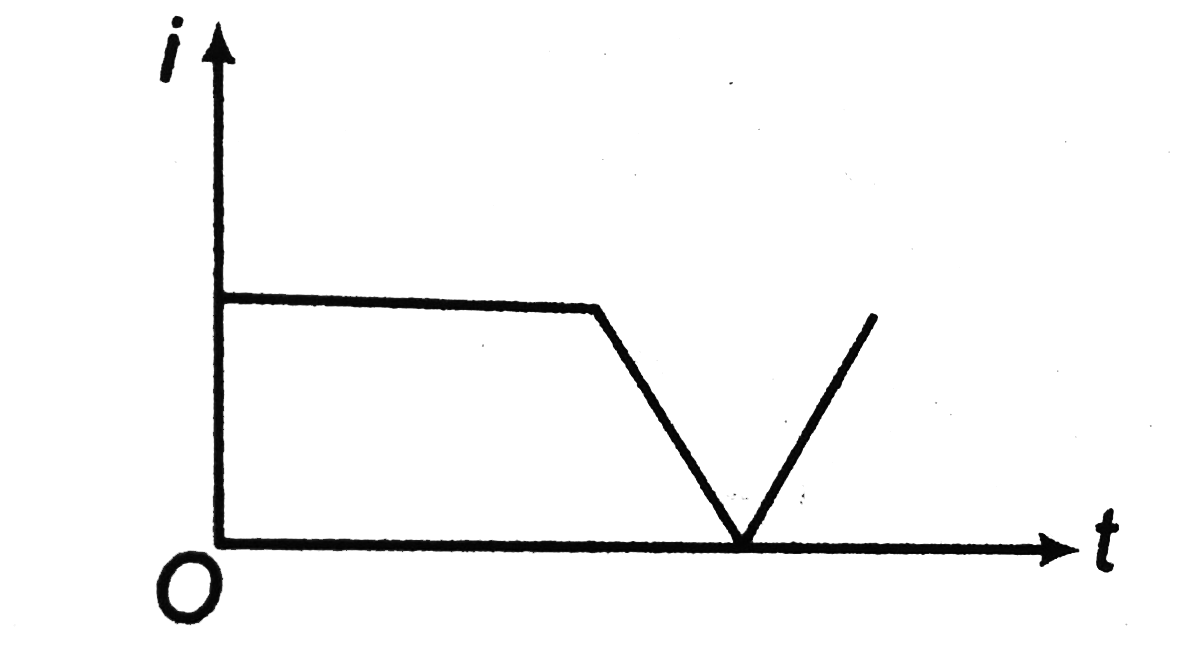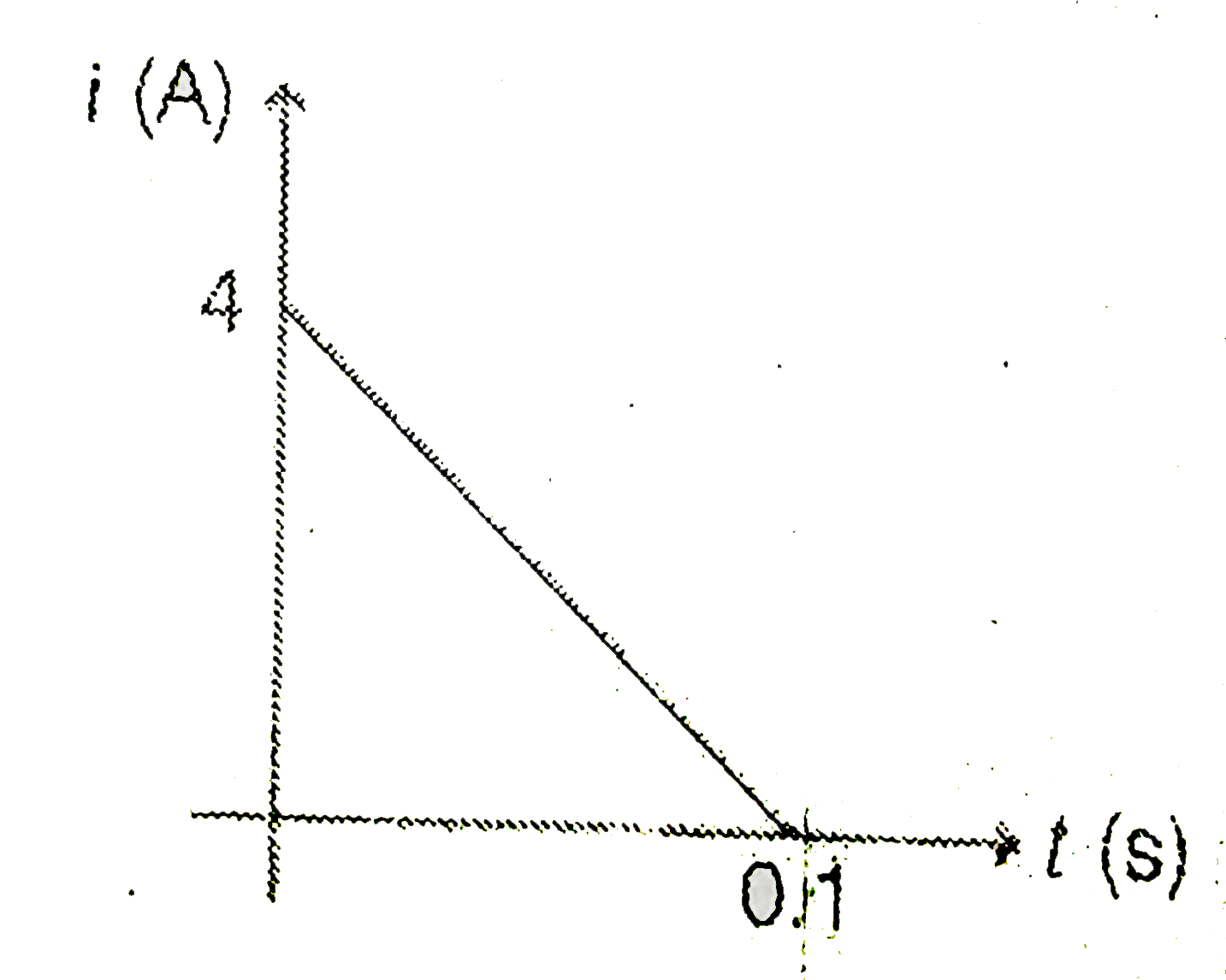The current in a coil varies with time as shown in the figuro. The variation of induced emf with time would be




The correct Answer is:A
To solve the problem of finding the variation of induced EMF with time based on the given current variation in a coil, we can follow these steps:
1. Understand the Relationship: The induced EMF (ε) in a coil is given by Faraday's law of electromagnetic induction, which states:
ε=−Ldidt
where L is the inductance of the coil and didt is the rate of change of current with respect to time.
2. Analyze the Current-Time Graph: Examine the graph of current (I) versus time (t) provided in the question. Identify the different segments of the graph to determine how the current changes over time.
3. Segment 1: From 0 to T/4:
- The current increases linearly.
- Here, didt is constant and positive.
- Therefore, the induced EMF (ε) will be negative (since the formula has a negative sign) and constant.
4. Segment 2: From T/4 to T/2:
- The current remains constant (horizontal line).
- Thus, didt=0.
- Consequently, the induced EMF (ε) will be zero.
5. Segment 3: From T/2 to 3T/4:
- The current decreases linearly.
- Here, didt is constant and negative.
- Therefore, the induced EMF (ε) will be positive and constant.
6. Segment 4: From 3T/4 to T:
- The current remains constant again.
- Thus, didt=0.
- Therefore, the induced EMF (ε) will again be zero.
7. Plotting the Induced EMF: Based on the analysis:
- From 0 to T/4, ε is negative and constant.
- From T/4 to T/2, ε is zero.
- From T/2 to 3T/4, ε is positive and constant.
- From 3T/4 to T, ε is zero.
8. Select the Correct Option: Compare the derived graph of induced EMF with the provided options in the question. The correct option should match the behavior we have plotted.
Final Answer:
The variation of induced EMF with time will show a negative constant value from 0 to T/4, zero from T/4 to T/2, a positive constant value from T/2 to 3T/4, and zero again from 3T/4 to T.
ε=−Ldidt
where L is the inductance of the coil and didt is the rate of change of current with respect to time.
- The current increases linearly.
- Here, didt is constant and positive.
- Therefore, the induced EMF (ε) will be negative (since the formula has a negative sign) and constant.
- The current remains constant (horizontal line).
- Thus, didt=0.
- Consequently, the induced EMF (ε) will be zero.
- The current decreases linearly.
- Here, didt is constant and negative.
- Therefore, the induced EMF (ε) will be positive and constant.
- The current remains constant again.
- Thus, didt=0.
- Therefore, the induced EMF (ε) will again be zero.
- From 0 to T/4, ε is negative and constant.
- From T/4 to T/2, ε is zero.
- From T/2 to 3T/4, ε is positive and constant.
- From 3T/4 to T, ε is zero.
The variation of induced EMF with time will show a negative constant value from 0 to T/4, zero from T/4 to T/2, a positive constant value from T/2 to 3T/4, and zero again from 3T/4 to T.
Topper's Solved these Questions
- BOOK - AAKASH INSTITUTE ENGLISHCHAPTER - ELECTROMAGNETIC INDUCTIONEXERCISE - ASSIGNMENT(SECTION -D) Assertion-Reason type Question)15videos
ELECTROMAGNETIC INDUCTION
- BOOK - AAKASH INSTITUTE ENGLISHCHAPTER - ELECTROMAGNETIC INDUCTIONEXERCISE - ASSIGNMENT(SECTION - B) (OBJECTIVE TYPE QUESTIONS)25videos
ELECTROMAGNETIC INDUCTION
- BOOK - AAKASH INSTITUTE ENGLISHCHAPTER - ELECTRIC CHARGES AND FIELDS EXERCISE - comprehension3videos
ELECTRIC CHARGES AND FIELDS
- BOOK - AAKASH INSTITUTE ENGLISHCHAPTER - ELECTROMAGNETIC WAVESEXERCISE - ASSIGNMENT SECTION - D Assertion-Reason Type Questions25videos
ELECTROMAGNETIC WAVES
Similar Questions
The current in a certain circuit varies with time as shown in figure. Find the average current and the rms current in terms of I0
 .View Solution
.View SolutionRadius of a circular ring is changing with time and the coil is placed in uniform magnetic field perpendicular to its plane. The variation of 'r' with time 't' is shown in Fig. Then induced emf e with time t will be best represented by
 View Solution
View SolutionRadius of a circular ring is changing with time and the coil is placed in uniform magnetic field perpendicular to its plane. The variation of 'r' with time 't' is shown in Fig. Then induced emf e with time t will be best represented by
 View Solution
View SolutionRadius of a circular ring is changing with time and the coil is placed in uniform magnetic field perpendicular to its plane. The variation of 'r' with time 't' is shown in Fig. Then induced emf e with time t will be best represented by
 View Solution
View SolutionWhen current in a coil changes with time, how is the back e.m.f. induced in the coil related to it ?
View SolutionThe current i in an inductionn coil varies with time t according to the graph shown in the figure. Which of the following grahs shows athe induced emf (ε) in the coil with time?
 View Solution
View SolutionThe current i in an inductionn coil varies with time t according to the graph shown in the figure. Which of the following grahs shows athe induced emf (ε) in the coil with time?
 View Solution
View SolutionThe magnetic flux through a coil varies with timet as shown in the diagram. Which graph best represents the variation of the e.m.f. E induced in the coil with time t?
View SolutionSome magnetic flux is changed from a coil resistance 10Ω. As a result an induced current developed in it which varies with time as shown figure, The magnitude of changes f in flux through the coil (in webers) is
 View Solution
View SolutionThe current i in an induction coil varies with time according to the graph shown in figure. Which of the following graph shows induced emf in the coil with time:
View Solution

